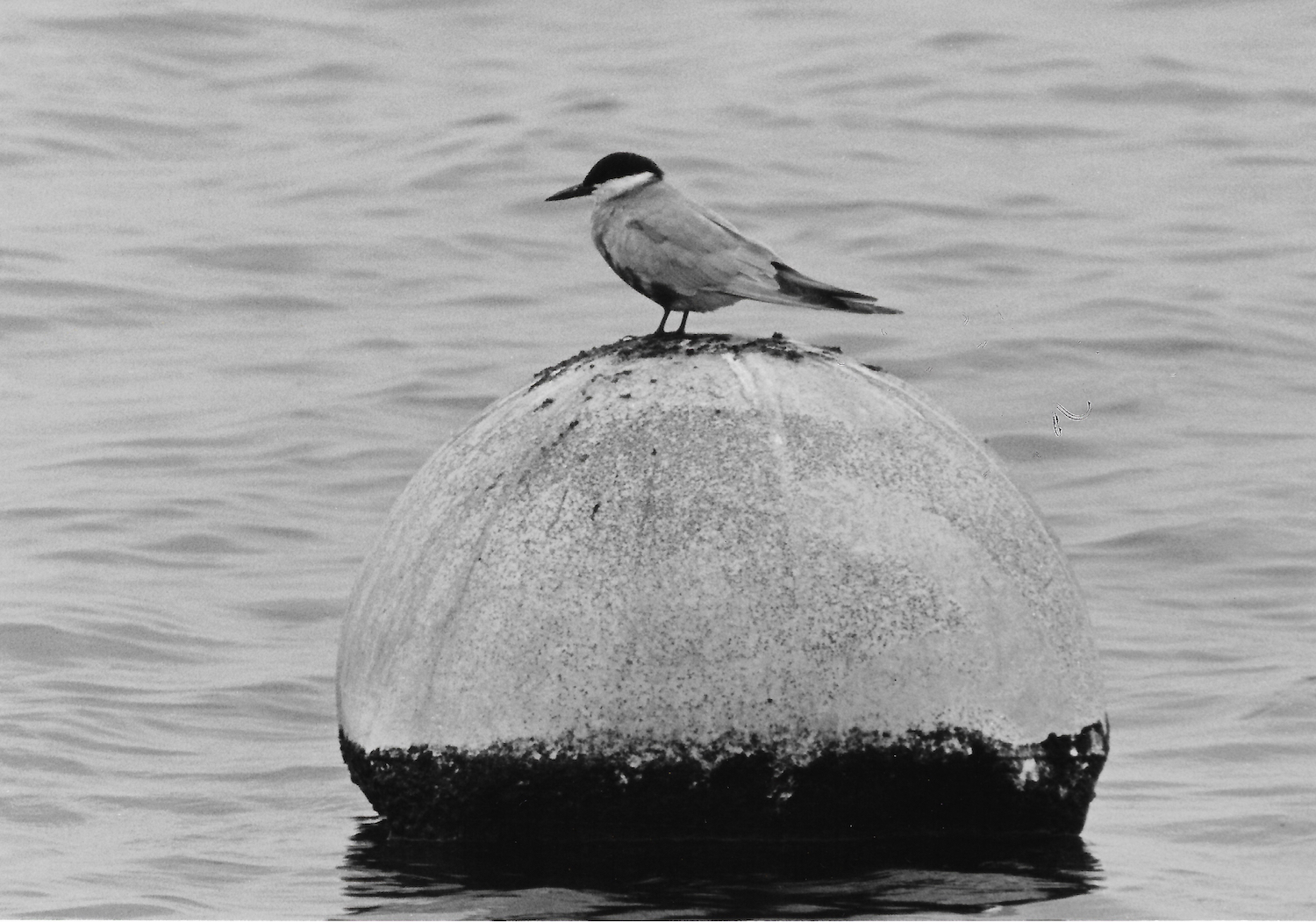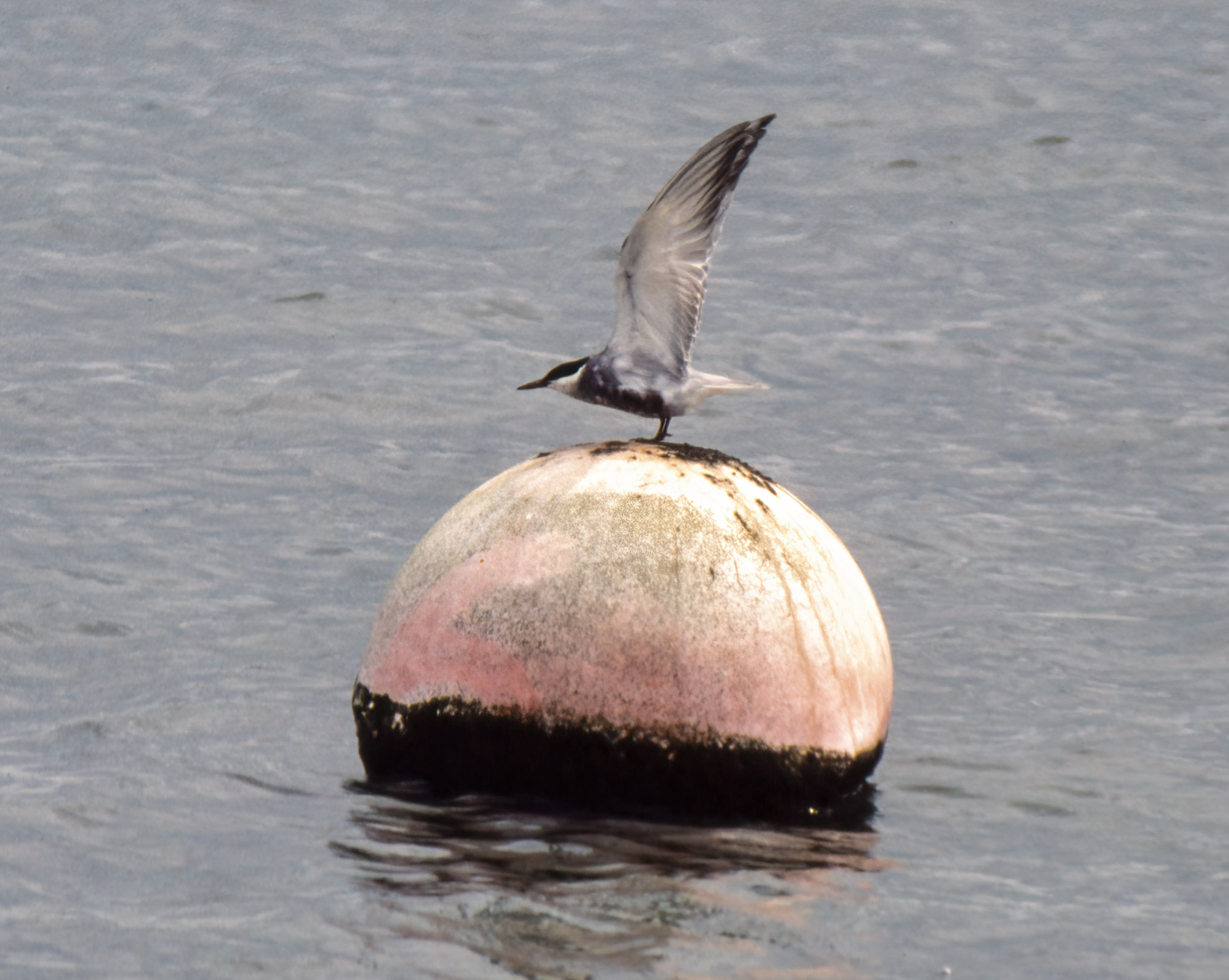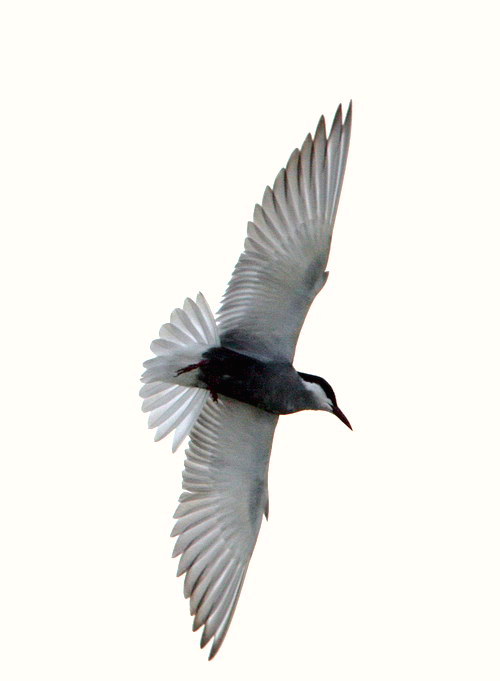Whiskered Tern Chlidonias hybrida
Vagrant. Southern Europe.



There have been 202 British records, 1950-2018, averaging about 5 per year and including occasional large influxes as occurred in 2008 (12), 2009 (25) and 2016 (11). The distribution of records from May to August is typical for this species, though the peak month nationally is May (BBRC) rather than June as in the Lincolnshire records.
| Site | First date | Last date | Count | Notes |
| Covenham Reservoir | 10/06/1987 | 15/06/1987 | 1 | 2CY |
| Gibraltar Point NNR | 08/08/2004 | - | 1 | Adult |
| Gibraltar Point NNR | 21/06/2006 | 22/06/2006 | 1 | Adult |
| Barton Pits | 07/06/2008 | - | 1 | Adult |
| Alkborough Flats | 27/06/2009 | - | 1 | Adult |
| Fiskerton Fen | 02/08/2009 | - | 1 | Adult |
| Apex Pit, North Hykeham | 13/05/2016 | - | 1 | Adult |
| RAF Woodhall LWT reserve & Kirkby GP | 05/06/2024 | 08/06/2024 | 1 | 2CY+ |
Whiskered Tern at Covenham Reservoir June 10th-15th 1987: first county record.
by Ken Wilson
Note: this account is based on the original BBRC submission and the article which appeared in the Lincolnshire Bird Report for 1987. There were seven British records that year, making it one of the best years ever at the time, although somewhat eclipsed by some of the more recent influxes.
Circumstances
On the evening of June 10th, Simon Lancaster had reasonable views of a ‘marsh’ tern in flight and resting on a large buoy in the north-eastern corner of Covenham Reservoir, which he tentatively identified as a Whiskered Tern from its contrasting black cap, white cheeks, and dusky underparts. The bird was then seen to fly off north before dusk. Next morning, I arrived at the reservoir shortly before 08.00 hr via the official car park forsaking my usual approach from Grange Lane. Scanning the water, I soon picked up a smallish dark-looking tern roosting on the buoy in the north-east corner. Visibility was poor with low cloud and mist, so I moved along the north wall to obtain better views. Closer inspection revealed that the tern had an overall dusky appearance, with prominent white cheeks below its black cap which enabled me to confirm the identification as a Whiskered Tern.
After taking some hurried notes I left the reservoir and alerted as many local birdwatchers as possible, returning at 09.30 hr with Keith Atkin and Roger Labbett. The tern was still sitting on the buoy and was still present when I left at 10.30 hr to alert more birdwatchers. Unfortunately, it flew off during the afternoon and many would-be observers left disappointed. However, it was back on the buoy the next morning and remained at the reservoir, with several long absences, until June 15th.
Description
Fairly similar to Black Tern though appeared slightly larger with a slightly longer bill. Legs and feet were dark red, bill also dark red and darker towards the tip. At rest the wings projected just beyond the tail which had a shallow fork. Upperparts were uniformly pale to mid-grey with a black cap extending from the forehead level with the eyes, over the crown and some distance to nape. Cheeks white. Throat and underparts appeared dusky and on closer inspection were dark grey with white tips to feathers giving it a mottled effect. Vent and undertail coverts pure white.
The Whiskered Tern is an almost annual vagrant to the British Isles, overshooting its breeding range in southern Spain and central France. This record has been accepted by British Birds and is the first occurrence in Lincolnshire and South Humberside.
Reference
Wilson, K. (undated) Whiskered Tern at Covenham Reservoir, June 10th-15th. Lincolnshire Bird Report 1987, 64-65.
(Account prepared March 2018, updated with reference to the new Birds of Lincolnshire (2021), September 2022)

